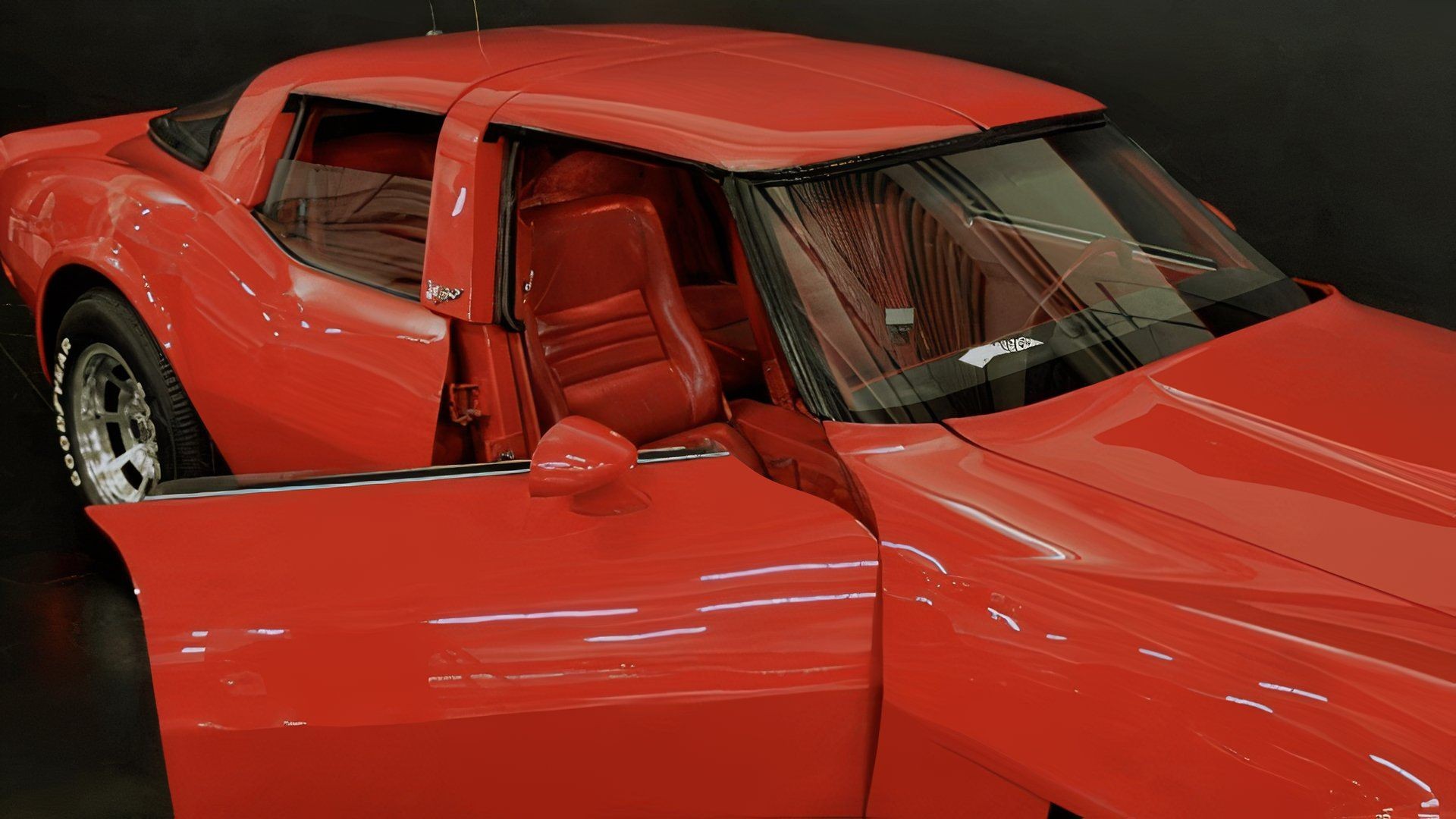Chevrolet’s Corvette has long been an icon of American sports cars, celebrated for its powerful V8 engines, striking aesthetics, and competitive pricing compared to its European counterparts. For decades, Chevrolet has maintained the Corvette’s classic formula, but recent years have seen a shift towards electrification and the exploration of new body styles. Among these bold moves is the concept of a four-door Corvette, both as a sedan and an SUV, currently under development. Interestingly, this isn’t the first time Chevrolet has considered a 4-door Corvette. The original “Corvette America,” a project shrouded in rarity, might be unknown to many. Let’s delve into the story of this forgotten experiment and Chevrolet’s renewed interest in the four-door Corvette concept.

The Genesis of a Practical Corvette: The Corvette America
The automotive landscape of the 1970s presented unique challenges. The oil crisis drove up fuel costs and insurance rates, making high-performance cars less accessible to the average consumer. Simultaneously, stringent emissions regulations led to a decrease in the power output of American sports and muscle cars compared to their predecessors from the 1960s. This shift in market dynamics caused difficulties for American manufacturers as consumers increasingly turned to smaller, more fuel-efficient imported vehicles like the Honda Civic and Accord. American automakers needed to innovate to recapture buyer interest beyond just traditional performance.
California Custom Coach, a company with an eye on market trends, believed they had a solution: a four-door Chevrolet Corvette. Recognizing that the Corvette of the era couldn’t match the raw power of earlier models, they aimed to broaden its appeal by increasing its practicality. The idea was to extend the Corvette’s platform, effectively creating a four-door sedan with enhanced passenger and cargo space. The logic was that if the Corvette could serve as a practical family car, its slightly diminished performance compared to previous generations might be more easily overlooked. Furthermore, a 4-door Corvette could potentially serve as both a daily driver and a weekend sports car, justifying its running costs by consolidating vehicle ownership.
The 4-Door C3 Corvette: Conception and Demise
While the initial concept of a more practical Corvette may have originated within GM circles, the actual development and production were outsourced to the California Coach Company. This decision likely reflects GM’s cautious approach, wanting to distance themselves from the project if it proved unsuccessful. As history shows, the “Corvette America” was indeed not a commercial success.
The plan was to produce 40 units of the Corvette America. The process, while ambitious, was conceptually straightforward: take a 1979 C3 Corvette, extend its wheelbase by 30 inches, integrate two additional doors and seats, and structurally reinforce the modifications. Mechanically, the Corvette America remained true to its C3 roots, retaining the 350 cubic-inch small-block V8 engine. Although the added length and doors increased weight, the four-door Corvette was only about 500 pounds heavier than the standard two-door model. However, despite the engineering effort, the Corvette America faced significant hurdles.

The Downfall of the Corvette America
Several critical factors contributed to the Corvette America’s failure:
- Prohibitive Cost: Priced at approximately $35,000, the Corvette America was exorbitantly expensive for its time. To put this in perspective, in 1980, $35,000 could buy two brand-new, standard C3 Corvettes with money to spare for optional features.
- Underwhelming Performance: The 195 horsepower output of Chevy’s small-block V8 in 1980 resulted in sluggish performance for the heavier four-door Corvette. It achieved a 0 to 60 mph time of 9.1 seconds and a top speed of only 101 mph, making it the slowest Corvette ever produced.
- Lack of Market Demand: Ultimately, there was simply no significant consumer demand for a four-door Corvette. The combination of high price and poor performance overshadowed any potential appeal of added practicality.
Consequently, the Corvette America project was short-lived. Estimates suggest that fewer than ten were ever produced, with only a handful known to exist today, making them exceptionally rare automotive curiosities. Recently, one surviving Corvette America was offered for sale by NBS Auto Showroom for a staggering $214,884. While it’s unclear if the vehicle sold at that price, it underscores the unique historical value, albeit not widespread market appeal, of this unusual chapter in Corvette history.
Chevrolet Revisits the 4-Door Corvette Idea
Almost half a century later, Chevrolet is again exploring the four-door Corvette concept, this time with a more serious and comprehensive approach. Instead of a modification of an existing model, Chevrolet is reportedly developing both a four-door Corvette sedan and a Corvette SUV from the ground up.
The 2025 Corvette SUV
The notion of a Corvette SUV might initially seem unconventional to Corvette purists. However, when considering the success of performance SUVs from brands like Aston Martin (DBX), Porsche (Cayenne), and Ford (Mustang Mach-E), the rationale becomes clearer. Performance SUVs represent a lucrative market segment, and leveraging the iconic Corvette name could be a strategic masterstroke for Chevrolet.
While a Corvette SUV might provoke traditionalists, its potential financial success could enable Chevrolet to invest further in developing more specialized and enthusiast-focused Corvettes in the future. This strategy has proven effective for brands like Lamborghini and Aston Martin. Moreover, early reports suggest the Corvette SUV will debut with gasoline powertrains, likely including V8 options, which may appease some traditional performance enthusiasts.

The 2025 Corvette Sedan
Rumors suggest the upcoming Chevrolet Corvette Sedan might embrace electric power. While an electric four-door Corvette might have seemed heretical in the past, it aligns with current automotive trends and Chevrolet’s own move towards hybrid and electric vehicles, exemplified by the hybrid Corvette. Following the precedent set by vehicles like the Mustang Mach-E, a four-door electric Corvette sedan could represent a forward-thinking evolution of the Corvette lineage. Currently, Chevrolet is maintaining secrecy around the specifics of the Corvette Sedan project.
If both the Corvette SUV and Sedan reach production, they are expected to be far more refined and cohesive vehicles than the experimental C3-based Corvette America. These new models represent Chevrolet’s serious consideration of expanding the Corvette brand into new segments, potentially broadening its appeal while navigating the evolving automotive market.
